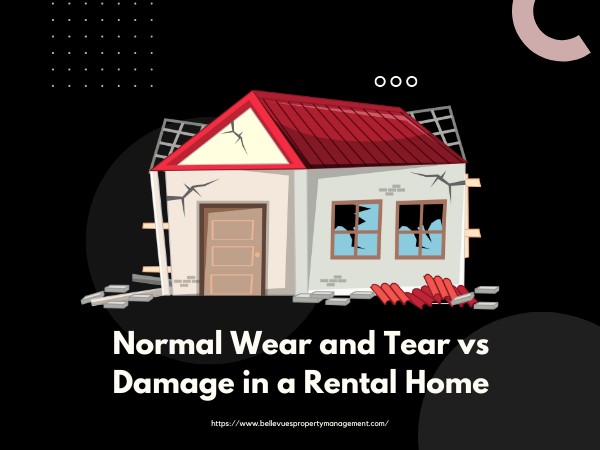Normal Wear and Tear vs Damage in a Rental Home
Understanding the difference between a home’s normal wear and tear vs damage is essential for both landlords and residents. It’s especially important for landlords because 48% of them stress over property damage caused by their renters. However, the line between tears and damage to a property often blurs, leading to various disagreements.
In this article, we’ll help you differentiate between normal wear and tear vs damage in a property. It also covers the process of documenting these issues for future use.
What is Normal Wear and Tear?
Normal wear and tear generally refer to the expected deterioration of a property’s condition. It naturally occurs over time with the resident's everyday use and not because of deliberate carelessness and abuse. It’s considered a normal part of renting a property and is expected to happen even with the most careful residents.
That’s why normal wear and tear is the landlord's responsibility to repair or replace. They cannot deduct the cost of repairing normal wear and tear from a resident's security deposit.
Examples of normal wear and tear include:
- Faded paint or wallpaper
- Minor scuffs or marks on walls
- Worn out carpet
- Loose door handles or hinges
- Faded or worn flooring
- Stains on countertops or floors from everyday use
- Aged appearance of fixtures and appliances
What is Rental Home Damage?
Damage in a rental property refers to any harm and destruction that goes beyond normal wear and tear. These kinds of damages significantly affect the property’s value, use, and appeal. Unlike normal wear and tear, damage is more or less intentionally done. It’s a direct result of the resident's carelessness, misuse, and negligence of the property.
Between normal wear and tear vs damage, the resident is responsible for repairing the latter. If needed, the landlord can also deduct these repair costs from the resident’s security deposit.
Examples of damage in the rental home include:
- Holes and dents in walls, doors, or floors
- Broken windows, mirrors, or light fixtures
- Stains, burns, or water damage to carpets, flooring, or countertops
- Missing or broken appliances, fixtures, or furniture
- Any damage done by the resident's pet
- Excessive filth that goes beyond usual cleaning standards
How to Document Normal Wear, Tear, and Damage?
Frequent inspections must be performed to document new and existing damages to the property. This will help you identify normal wear and tear vs damage throughout the resident's lease. Additionally, it prevents you from wrongly charging the resident and avoiding further disputes.
Here are some ways you can document these issues:
- Conduct an Inspection: Conduct a thorough inspection of the property. Carry out these inspections before a new resident moves into the property and then after they move out. Be sure to document the differences.
- Take Photos and Videos: Taking detailed photos and videos of each room and existing damages is also helpful. These visual records serve as concrete evidence of the property’s condition.
- Make a Checklist: Use a comprehensive checklist that covers all aspects of your property. It should include every room, appliance, fixture, and system to note any signs of wear, damage, or malfunction.
The easiest way is to onboard a reliable property management partner. They will help you find reliable residents, conduct regular inspections, collect rent, and take care of routine maintenance.
Bottom Line
Understanding the difference between normal wear and tear vs damage is a vital factor in rental agreements. While normal wear and tear is expected to be the landlord's responsibility, damage caused to the property is the resident's responsibility. Having a clear understanding of this ensures a smooth rental experience without any disputes.


